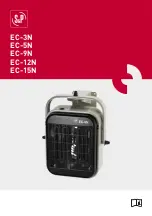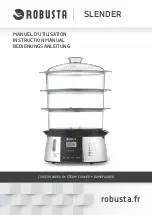
6
General
Information
Battery Storage
Your Star Electric Vehicle is equipped with lead acid batteries. All batteries will self-discharge over time.
The rate of self-discharge varies depending on the ambient temperature and the age and condition of the batteries.
A fully charged battery will not freeze in winter temperatures unless the temperature falls below -75° F (-60° C).
For winter storage, the batteries must be clean, fully charged and disconnected from any source of electrical drain.
As with all electric vehicles, the batteries should be checked and recharged as required or at a minimum of 30-day
intervals.
Charger Operating Instructions
1)
Always use a grounded outlet. If using an extension cord, be sure and use a grounded 3-wire 12 AWG cord to avoid
excessive voltage drops.
2)
The charger will then turn on and experience a short LED indicator self-test for approximately 2 seconds. If connected to a
battery pack, a trickle current will be applied to the charger until a minimum voltage is reached. If charger is waiting to be
connected to a battery pack and being used in an off-board application, the charging algorithm number will be displayed
for approximately 11 seconds and then display an under-voltage fault (the fault will disappear when plugged into the
battery.)
3)
When a minimum battery voltage has been detected, charger will enter the bulk charging constant-current stage. The
length of charge will vary depending on how large and how depleted the battery pack is, the ambient temperature, and the
input voltage. If the ambient temperature is too high, charge power will be reduced to maintain a maximum interval
temperature. If the input AC voltage is low, charge power will be reduced to avoid high input currents.
4)
At the time the battery is at approximately 80% state of charge, the bulk stage is then completed and an >80% charge
notification is given. In the next phase, known as the absorption or constant-voltage phase, the last 20% of charge will be
returned to the battery. If the vehicle requires immediate usage, charging could be terminated at this point. However, it is
recommended to wait for 100% charge notification to ensure maximum battery capacity and life.
5)
A low current “finish-charge” is lastly applied to return and maintain capacity.
6)
The battery is then completely charged. You may now unplug the charger from AC power. If kept plugged in, the charger
will automatically restart another complete charge cycle if the voltage drops below a minimum voltage or 30 days has
passed.
7)
If faults occurred at anytime during the charging process, a fault notification is given by flashing RED with corresponding
code. Some errors are serious and may require human intervention to fix the problem and then reset the charge by
disconnecting AC power for at least 15 seconds. Others may automatically recover when the fault condition is eliminated.
To indicate which error occurred, a fault notification will flash RED a number of times, stop, and then repeat.
[1 FLASH] Battery Voltage High: auto-recover
[2 FLASH] Battery Voltage Low: auto-recover
[3 FLASH] Charge Timeout: the charge failed to complete in the allotted time. This might indicate a problem with the
battery pack, or that the charger output was reduced due to high ambient temperatures.
[4 FLASH] Check Battery: battery pack could not be trickled charged to the minimum level required for initial charge. May
indicate one or more cells in the battery pack are damaged or shorted.
[5 FLASH] Over-Temperature: auto-recover. Charger has shutdown because of high internal temperature. Typically
indicates no sufficient airflow for cooling.
[6 FLASH] Fault: an internal fault has been detected. After disconnecting AC power for at least 15 seconds, if Fault 6 is
again displayed, the charger must be taken to a qualified service depot.
Summary of Contents for Stalker 4x4
Page 1: ......







































